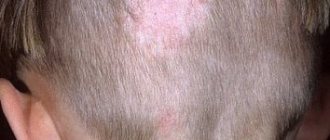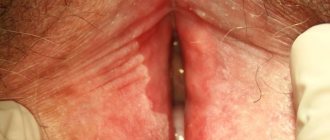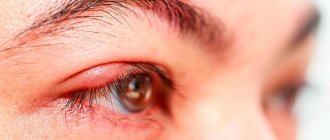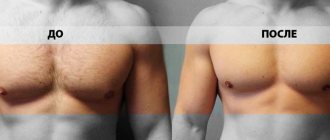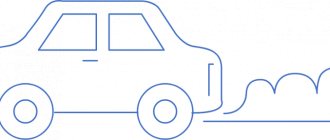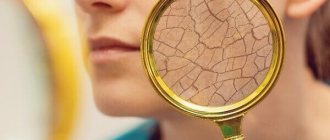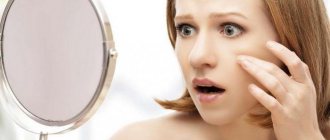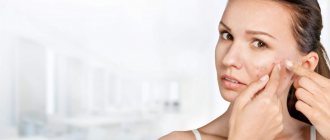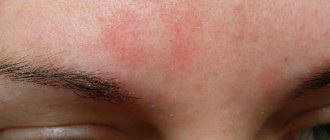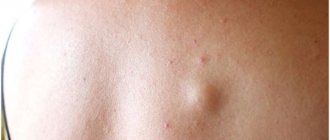What does lichen look like?
As the disease progresses, rashes appear - most often they take the form of small red or brown-purple lumps (on the skin) - a characteristic sign is the shine of the affected areas.
- On the scalp, lichen planus may take the form of small itchy bumps.
- In the mouth - on the surface of the mucous membrane - it can appear as a reticular change in white color.
- On the nail plate, lichen can form cavities and yellowish grooves, and in extreme cases, lead to atrophy of the nail plate.
Lichen planus is an inflammatory disease. It is worth emphasizing that this is not an infectious disease.
Lichen planus
Lichen planus of the oral mucosa
Lichen planus - medicinal
Lichen planus hypertrophic form
General notes on therapy
- The choice of treatment method depends on the severity and localization of clinical manifestations, the form and duration of the disease, information about the effectiveness of previously administered therapy.
- Treatment is not required for damage to the oral mucosa that is limited to reticular rashes of a typical form, not accompanied by subjective sensations. In other cases, patients require therapy.
- During the period of exacerbation of the disease, patients are recommended to take a gentle regimen with limited physical and psycho-emotional stress. In the food regime, salted, smoked, fried foods should be limited. In patients with damage to the oral mucosa, it is necessary to exclude irritating and rough foods.
treatment goals
- regression of rashes;
- improving the quality of life of patients.
indications for hospitalization
- ineffectiveness of outpatient treatment;
- widespread and severe lesions of the skin and mucous membranes, including hyperkeratotic, bullous, erosive and ulcerative.
External therapy
In the presence of limited rashes, treatment begins with the prescription of topical glucocorticosteroid drugs of medium and high activity (possibly alternating them):
- betamethasone, cream, ointment 2 times a day externally to the lesions for 12 weeks, or
- clobetasol, cream, ointment 2 times a day externally to the lesions for 4-8 weeks, or
- fluocinolone acetonide, cream, gel, ointment 2 times a day externally to the lesions for 4-8 weeks, or
- hydrocortisone-17 butyrate, cream, ointment 2 times a day externally to the lesions for 4-8 weeks, or
- triamcinolone ointment 2 times a day externally to the lesions for 4-8 weeks, or
- mometasone, cream, ointment, lotion 1-2 times a day externally to the lesions for 4-8 weeks, or
- betamethasone + salicylic acid, ointment 2 times a day externally to the affected areas for 4-8 weeks, or
- salicylic acid + flumethasone, ointment 2 times a day externally on the affected areas for 4-8 weeks.
Alternative Treatments
- tacrolimus ointment 2 times a day for 2 weeks
- calcipotriol ointment 2 times a day for 2 weeks
Systemic therapy
1. Systemic glucocorticosteroid drugs:
- prednisolone 20-30 mg per day orally for 1-2 months followed by gradual withdrawal or
- betamethasone 1 ml once every 2-3 weeks intramuscularly or intralesional, for a course of 3-4 injections.
2. In the treatment of patients with lichen planus, antimalarial drugs can be used, which are used as systemic therapy and can be prescribed with glucocorticosteroid drugs:
- Hydroxychloroquine 200 mg orally 2 times a day for 5 days, then a break of 2 days, treatment courses are repeated for 1-2 months or
- chloroquine 250 mg orally 2 times a day for 5 days, then break for 2 days, courses of treatment are repeated for 1-2 months.
3. To relieve itching, one of the antihistamines is prescribed
1st generation, which is used both orally and in injection forms:
- mebhydrolin 100 mg orally 2-3 times a day for 7-10 days or
- clemastine 1 mg orally or intramuscularly 2-3 times a day for 7-10 days.
Also, in order to reduce itching, an antipsychotic with non-blocking activity can be prescribed: hydroxyzine 25-100 mg per day orally for 28 days.
Alternative Treatments
- Metronidazole 500 mg 2 times a day for 10 days
Non-drug treatment
1. For minor infiltration of the lesions, narrow-band medium-wave phototherapy with a wavelength of 311 nm is prescribed 3-4 times a week for 6-12 weeks.
2. For patients with more pronounced infiltration in the lesions, PUVA therapy with oral or external use of a photosensitizer is indicated:
- PUVA therapy using oral photosensitizers: methoxsalen 0.6 mg per kg body weight or
- PUVA therapy with external use of photosensitizers: methoxalen 0.5-1 mg/l for a course of 8 to 23 procedures.
Treatment of lichen planus of the oral mucosa
1. First-line drugs for the treatment of patients with LP of the oral mucosa are topical glucocorticosteroid drugs:
- betamethasone, cream, ointment 2 times a day externally to the lesions for 8 weeks, or
- triamcinolone ointment 3 times a day externally to the lesions for 12 weeks, or
- fluocinolone acetonide, cream, gel, ointment 2 times a day externally to the lesions for 4-12 weeks, or
- clobetasol, cream, ointment 2 times a day externally to the lesions for 4-8 weeks.
2. In case of ineffectiveness of topical corticosteroid drugs, retinoids are prescribed for external use:
- isotretinoin gel 2 times a day externally to the lesions for 8 weeks.
3. Additionally, painkillers and wound healing agents are used:
- aloe vera leaves, liniment 2 times a day externally on the lesions;
- lidocaine + chamomile flower extract, gel: a strip 0.5 cm long is applied to painful or inflamed areas of the oral mucosa and rubbed in with light massaging movements 3 times a day;
- choline salicylate + cetalkonium chloride, dental gel 1 cm for adults and 0.5 cm for children, squeezed onto a clean finger and rubbed with light massaging movements into the affected area of the oral mucosa 2-3 times a day before or after meals and before bed.
4. In the case of severe lichen planus of the oral mucosa, resistant to therapy, systemic glucocorticosteroid drugs are used: prednisolone 0.5-1 mg per kg of body weight for 3 weeks.
For the treatment of children
topical glucocorticosteroid drugs are used.
Tactics in the absence of treatment effect
If the therapy is ineffective, patients may be prescribed acitretin or cyclosporine:
- acitretin 30 mg per day orally for 3-8 weeks or
- isotretinoin 0.5 mg/kg/day for 8 weeks
- cyclosporine 5 mg per kg body weight per day orally for 3-8 weeks.
Due to the possibility of developing undesirable effects during retinoid therapy (changes in the level of transaminases, hepatitis, hypertriglyceridemia, hypercholesterolemia, hyperglycemia, etc.), it is necessary to monitor the level of lipids, blood glucose, and liver function. Due to the teratogenic properties of retinoids, women of reproductive age should use reliable contraception 4 weeks before, during and for 2 years after the end of acitretin therapy. If pregnancy occurs, it should be terminated for medical reasons.
During treatment with cyclosporine, regular monitoring of plasma creatinine concentration is necessary - an increase may indicate a nephrotoxic effect of the drug and requires a dose reduction: by 25% if creatinine increases by more than 30% from the original and by 50% if its level doubles; When dose reduction within 4 weeks does not lead to a decrease in creatinine, cyclosporine is discontinued. It is recommended to monitor blood pressure, blood levels of potassium, uric acid, bilirubin, transaminases, and lipid profile. During the treatment period, immunization with live attenuated vaccines is contraindicated.
Lichen planus - causes
Although the reasons for the appearance of lichen on the skin or mucous membranes remain a mystery, this disease is often associated with autoimmune diseases. The immunological basis of the disease is indicated by the frequent coexistence of lichens with autoimmune diseases, that is, those in which cells of the immune system attack the body for unknown reasons, destroying “healthy” cells.
Lichen planus may appear in people diagnosed with diabetes, vitiligo, alopecia areata, certain liver diseases (including hepatitis and cirrhosis), and ulcerative enteritis (Crohn's disease). Likewise, lichen planus is more common in people who have had a transplant (especially graft-versus-host disease - GVHD) or are taking certain medications, such as penicillamine, methyldopt.
Reasons for development
The true causes of lichen planus have not been discovered. Experts are inclined to believe that the pathological mechanism is triggered by the following factors:
- The autointoxication factor occurs due to the accumulation of toxins in the body. A similar disorder occurs in arterial hypertension, cirrhosis and hepatitis, diabetes mellitus, gastritis and gastric ulcer. A biochemical analysis of the blood of shingles patients shows changes in liver samples.
- The intoxication factor affects the body in a similar way to an allergic reaction developed as a result of treatment with certain medications. These are preparations of gold, aluminum, antimony, arsenic and iodine. Lichen lesions can also appear on the body as a result of taking antibiotics and anti-tuberculosis medications, quinine and its derivatives.
- Viral-infectious, leading to increased cell division of the upper dermal level. Trying to fight back the negative influence of the factor, the immune system triggers the production of antibodies, which subsequently absorb their own beneficial cells. In Wilson's disease, these become epidermal cells.
- The immunoallergic impetus for the development of the disease is considered the leading one among all theories and unites them, because each of them is based on failures of the body’s protective functions.
- Neurogenic, provoking dermatosis after mental shock. Often, patients suffering from red lichen develop a variety of nervous system disorders. With neuritis, lichen elements form on the skin along the nerve branches.
How can you answer the question whether lichen ruber is contagious or not? Doctors do not have a unanimous opinion regarding the danger of Wilson's disease for others. Dermatosis can affect both members of the same family and the dermatologist himself, who takes the affected tissue for a biopsy.
Multiple episodes of infection of a doctor were not recorded, but a single case did occur in dermatological practice. The conclusion suggests itself is the following: in order to avoid the risk of catching an unnecessary sore, you should not allow close contact with a person covered with lichen spots.
Lichen planus - symptoms
Symptoms of the disease are well expressed:
- red or purple papules;
- skin lesions are usually shiny;
- formations that tend to stick together and appear in groups;
- whitish lines on the surface of the skin (the so-called Wickham grid);
- itchy skin.
Itchy skin
Symptoms of lichen planus usually appear suddenly - skin lesions during lichen planus are usually limited, the rash does not increase after the first symptoms appear.
Causes of tinea versicolor
The content of the article
Ringworm affects middle-aged people. Medicine identifies the causes that lead to the appearance of this disease in humans. These include:
- Predisposition to fungal skin diseases.
- Disruptions in the course of physiological processes in the epidermis.
- Endocrine diseases.
- Lack of a good night's sleep.
- Lack of rest.
- Time zone change.
- Excessive hygiene, using antiseptics.
- Improper functioning of the human immune system.
- Frequent bathing in salt water.
- Lack or excess of vitamins.
- Wearing clothes made of synthetic materials.
- Improper functioning of the lymphatic drainage system.
- Long-term use of steroid hormones.
- Nervous system problems.
- Hormone imbalance.
- Lack of hygiene measures in public places.
Types of lichen planus
There are many varieties of lichen planus, including: lichen planus, pigmented, nodular, pemphigoid, linear, follicular, erosive.
The type of lichen can also be determined by the place of its appearance: lichen planus in the mouth, lichen on the nails, lichen of the perianal area, lichen on the genitals: in men, lichen planus is found on the foreskin and on the head, in women, lichen can be found on the genitals lips - and resemble leukoplakia.
Pityriasis versicolor (tinea versicolor): symptoms
The disease is characterized by the following symptoms:
- the appearance of spots of different shapes, sizes (usually with uneven edges) and colors (white, red, brown, etc.);
- the spots become scaly and may sometimes itch;
- under the influence of the sun, spots can change color and intensity;
- as the disease progresses, the spots increase and unite into large groups;
- Sometimes, if the source of the spot is the scalp, the hair may fall out.
Localization of spots is the chest, back, groin area, arms, legs, less often the face, scalp and genitals. The incubation period ranges from two weeks to several months; in children, the first signs may appear earlier.
Pityriasis versicolor (colored, multi-colored or solar) lichen: causes of occurrence
The main cause of the disease is a fungus that gets on human skin. But there may be several factors that can provoke the active proliferation of this fungus and the appearance of such characteristic symptoms of pityriasis versicolor as multi-colored spots:
- individual (genetic) predisposition to dermatomycosis;
- skin type and/or disruption of the normal functioning of the stratum corneum;
- the presence of concomitant diseases of the endocrine system;
- diabetes mellitus, excess weight, vegetoneurosis;
- increased sweating;
- reduced immunity;
- chronic diseases;
- vegetative-vascular dystonia;
- diseases of the gastrointestinal tract, as well as liver and pancreas;
- respiratory diseases;
- severe stress and constant nervous tension;
- frequent changes in climate and time zones;
- uncontrolled use of medications and cosmetics that are unsuitable for your skin type;
- disturbances of hormonal levels and the functioning of the genitourinary system in women.
The reasons may also be external factors: hot weather or the use of antibacterial personal hygiene products (gels, creams, etc.). But, whatever the cause and no matter how the disease develops, if there are signs of any intensity, you should consult a doctor.
When contracting any skin disease, it is very important to treat not the symptoms, but the causes, while simultaneously getting rid of the existing factors that provoke the disease. This type of lichen may not go away for a long time, and accordingly, treatment may take a long time.
How to treat solar lichen (colored, pityriasis versicolor, multi-colored) and cure it, securing the result for a long time, dermatologists
medical
Modern diagnostic methods make it possible to get rid of the disease and prevent its relapses. An individual course is selected for each patient and maximum attention is paid during treatment to ensure comfort in the fight against an unpleasant disease.
Initial appointment
The initial appointment is an examination, studying tests and complaints to identify the causes that led to infection, as well as drawing up a general clinical picture. In some cases, already at the first consultation, the doctor can prescribe treatment and recommend a course of restorative procedures.
But if the case has any deviations or complications, then it is necessary to prescribe additional studies and consultations with other specialists.
Diagnostics includes:
- skin scraping examination;
- examination of the skin using a Wood's lamp;
- consultations and examinations with specialists such as a gastroenterologist
,
gastroenterologist
and psychotherapist; - examination of the skin using an iodine test.
What exactly the doctor will prescribe and whether any additional research will be needed depends solely on each specific case, as well as the selected methods and drugs for the treatment of pityriasis versicolor (tinea versicolor, solar lichen) in an adult or in children.
Treatment plan
If a course of treatment was prescribed at the patient’s first meeting with the doctor, then at the secondary appointment the doctor assesses the patient’s condition and the effectiveness of the prescribed regimen.
If the selected regimen and drugs for the treatment of pityriasis versicolor (variegated, colored) lichen do not work, then the doctor can either prescribe an additional examination or adjust the previously prescribed course. The doctor also draws up a treatment plan with an individual schedule for subsequent visits.
What can be included in the course of treatment?
Most often, the doctor prescribes:
- antifungal drugs;
- antifungal ointments and gels;
- special shampoos if lesions are found on the scalp;
- antibiotics from the tetracycline group for severe forms;
- topical products with exfoliating and anti-inflammatory effects.
During treatment, it is very important to strictly follow all the doctor’s instructions (take medications on schedule and in the right quantity, follow established rules, etc.), but remember that any deterioration or abnormal reaction of the body must be reported to the doctor so that he can adjust treatment.
Control reception
A follow-up visit to the attending physician's office is scheduled 21–30 days after the start of treatment. This is necessary to assess the patient’s condition after the main course and prescribe a number of restorative and preventive measures. Such measures may include physical therapy, restoration of gastrointestinal microflora, nutritional correction, etc.
Treatment result
The disease can be cured, but the timing of treatment and recovery is individual and is discussed at a doctor’s appointment. Also, if necessary, the doctor prescribes consultations and examinations for all family members, since infections could have occurred through personal hygiene items.
Prevention
A good prevention of this skin disease is:
- observing simple hygiene rules in public places (swimming pools, gyms, etc.);
- maintaining personal hygiene. Personal hygiene items can and should not only be changed frequently, but also constantly disinfected;
- ironing clothes after washing and before wearing (especially for children's underwear and clothes);
- wearing and using clothing and personal hygiene items only from natural materials of good quality;
- temporary avoidance of prolonged exposure to the sun;
- nutrition correction;
- hardening and dousing with acidified water;
- taking vitamins or vitamin complexes;
- compliance with sanitary standards in the apartment and in the workplace;
- individual selection of cosmetic skin care products;
- normal healthy sleep;
- a properly selected system of physical activity and sports to strengthen the immune system and increase the body’s resistance to external influences.
It is also important to exclude all causes that have led or may lead to a recurrence of pityriasis versicolor (colored, multicolored, solar) lichen. Compliance with minimum standards and taking care of your health will significantly reduce the risk of the return of this unpleasant skin disease, and will also bring your psychological state back to normal.
If the disease returns even after treatment and all the measures taken, then it’s time to think about a serious examination by a group of specialists, since inflammation of the skin may be a consequence of diseases that did not manifest themselves in any way before.
To make an appointment for a consultation or appointment with one of the medical dermatologists, you can use a special online form on the website or the phone number listed at the top of this page.
Method of infection
Mushrooms can come into contact with the skin of a healthy person, but with strong immunity, the body uses protective functions and the disease does not occur.
Main routes of transmission:
- Skin contact with the carrier.
- In public places: shower, fitting room.
- Use of a person’s personal belongings: towel, washcloth.
When infected with this microorganism, symptoms do not appear for 2 weeks to several months. They may not appear at all unless a situation arises when the immune system weakens.
